by Lance Hill | Aug 15, 2019 | Mirliton
As we head into the final month before the beginning of fall flowering, it’s a good time to pause and prepare. Our method of gardening is the “worse-case event” technique; the old saying that “mirlitons take care of themselves” is no longer true. Due to changing climate, mirlitons need an attentive caregiver. The best way to nurture mirlitons is to plan for all predictable events even if they are improbable. The summer heavy rains and intense heat have stressed plants, but here are some tips to anticipate the possible problems and ensure a good harvest.
Monitor your vines daily. Nothing is better than spending some quality time with your mirliton scouting for pests, disease, and watering problems. As my friend and mirliton expert grower Paul D’Anna says, get your morning cup of coffee and visit your vine daily.
Diseases. This is the time for the plant disease anthracnose which thrives on high heat and moisture. Colletotrichum lagenerium, the fungus that causes anthracnose, is a global problem and there is no effective organic treatment for it. But generally plants that suffer some die-off in August normally recover in September and fruit. Remove the yellowed and dead leaves and place in a plastic bag and dispose. Here are some photos and FAQs on the disease:
How to Diagnose Anthracnose
Anthracnose infected leaves
Wilting Anthracnose
Not all wilting is caused by anthracnose. Mirlitons will naturally wilt during the day in July and August yet they recuperate at night when they normally uptake water. Drying out actually toughens the leaves and protects them from disease. To diagnose soil moisture problems, look for traces of guttation and use a bamboo stake to test soil moisture daily.
Insects. Leaffooted stink bugs tend to show up for mirliton buffet once flowering starts. See examples of juvenile and adult bugs here. They are tough critters and mature bugs are impervious to insecticides, but they can easily be picked off with a butterfly net or a hand vacuum. I use a portable 20 volt vacuum with a PVC pipe extension (grandkids love to suck up pesky bugs), but a cheap butterfly net will suffice. Again, remove the bugs to a bag and dispose. We are experimenting with a “trap crop” strategy to divert stink bugs and will report out soon.
Pollinators. Mirlitons need honey bees to fruit but bees are scarce these days, especially in cities that experienced flooding and hurricanes that ruined bee habitat. A bee keeper told me he removed hundreds of hives while re-roofing houses damaged by hurricane Katrina. That was their favorite home in the city. If you don’t see bees visiting your mirliton flowers about midmorning when bees normally forage, you have two options. One is to hand-pollinate which is easy and fun. See the technique here. Second is to apply a bee pheromone like Beescent in September-October to attract bees. There are no studies on mirlitons and bee attractants, though some research shows they are effective with specific crops. I will offer you the worst kind advice gardening advice on the subject; I tried it and it works for me.
Weave your vine. High winds can traumatize vines and disturb flowering. The solution is simple; as the vine grows, weave the tips of vines through your trellis so that it secures itself to the wire trellis. Best to do this throughout the whole growing season, but it’s never too late to start.
Install a sprinkler system now while it is hot and fun to get wet while setting it up. A cheap rotary sprinkler activated when temperatures are forecast to drop below 40 degrees f. at night will protect your vine from early frost. The method works, saving mirlitons through September to November cold snaps. See a simple rotary sprinkler mounted above a trellis here and a ground-mounted sprinkler here.
by Lance Hill | Aug 2, 2019 | Mirliton

Renee Lapeyrolerie, proud grower in Treme neighbor of New Orleans
As a young girl in St. John Parish, Louisiana, Renee Lapeyrolerie lived in a community in which mirlitons were a common site in back yards. When she moved to New Orleans to attend Loyola University, she soon began to yearn for the lush growth of the vine. 20 years ago she bought a home in the centuries-old African American neighborhood of Treme (pronounced, Tra-May), a famous community of free people of color, many of them migrants from Haiti, and including a maternal ancestor who bought property in 1795. Haitians brought mirlitons with them from their new nation, an integral part of Haitian cuisine.
Parts of the Treme flooded during hurricane Katrina, but only a few feet. The community was part of the slim alluvial ridge along the Mississippi river and was home to mirliton gardeners for decades.
About five years ago Lapeyrolerie (pronounced Lap-a-rol-er-y) purchased a mirliton sprout from a garden center and planted it in her back yard. The vine soon spread about 20 feet along her fence and began to charge up her neighbor’s tree. Its origins as a variety are uncertain, but it is definitely part of the Louisiana landrace because it fits the phenotype (large but uniquely without furrows) and it has proven it can flourish in our climate. In the early years she had some problems with the vine flowering but not fruiting. This was not unusual for New Orleans post-Katrina because the flooding and re-roofing destroyed the habitat for bees (many hives were in attics that were disturbed by roofing). She is considering using a synthetic bee pheromone to attract bees this fall, though she can hand pollinate using instructions on our photo site.
In recent years, her five year old plant produced a good fall crop and she even got a modest spring crop in 2019. For advice on the culture of the plant, Renee had only go to her Aunt Helen and neighbors back in St. John Parish. Renee hopes to inspire fellow Treme residents to take up the mirliton and renew a tradition that is two centuries old and has donated several sprouts and plants to Mirliton.Org.
We have named the variety the “Lapeyrolerie Mirliton Variety” in honor of Renee. 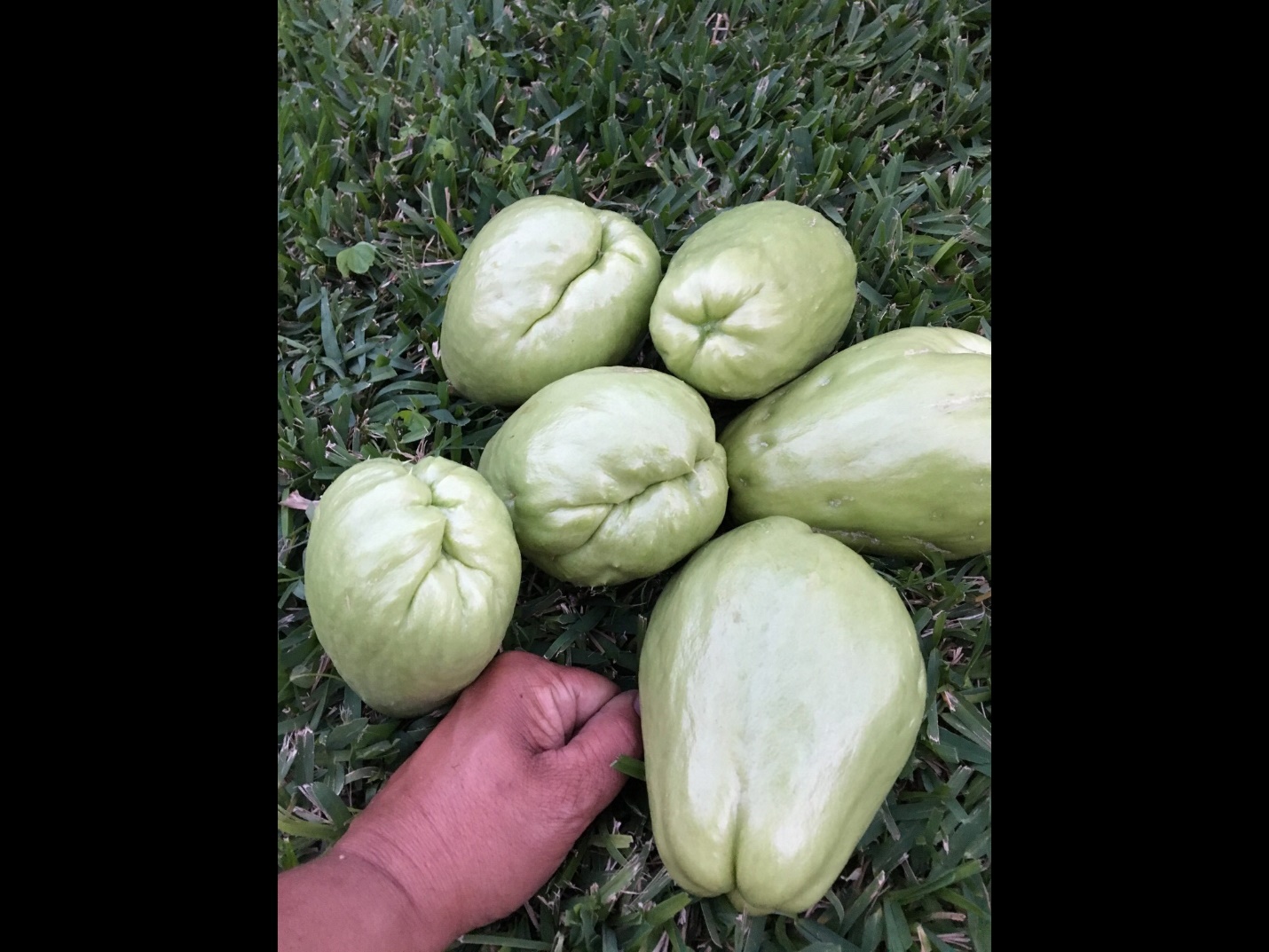 Lapeyrolerie Mirlitons
Lapeyrolerie Mirlitons
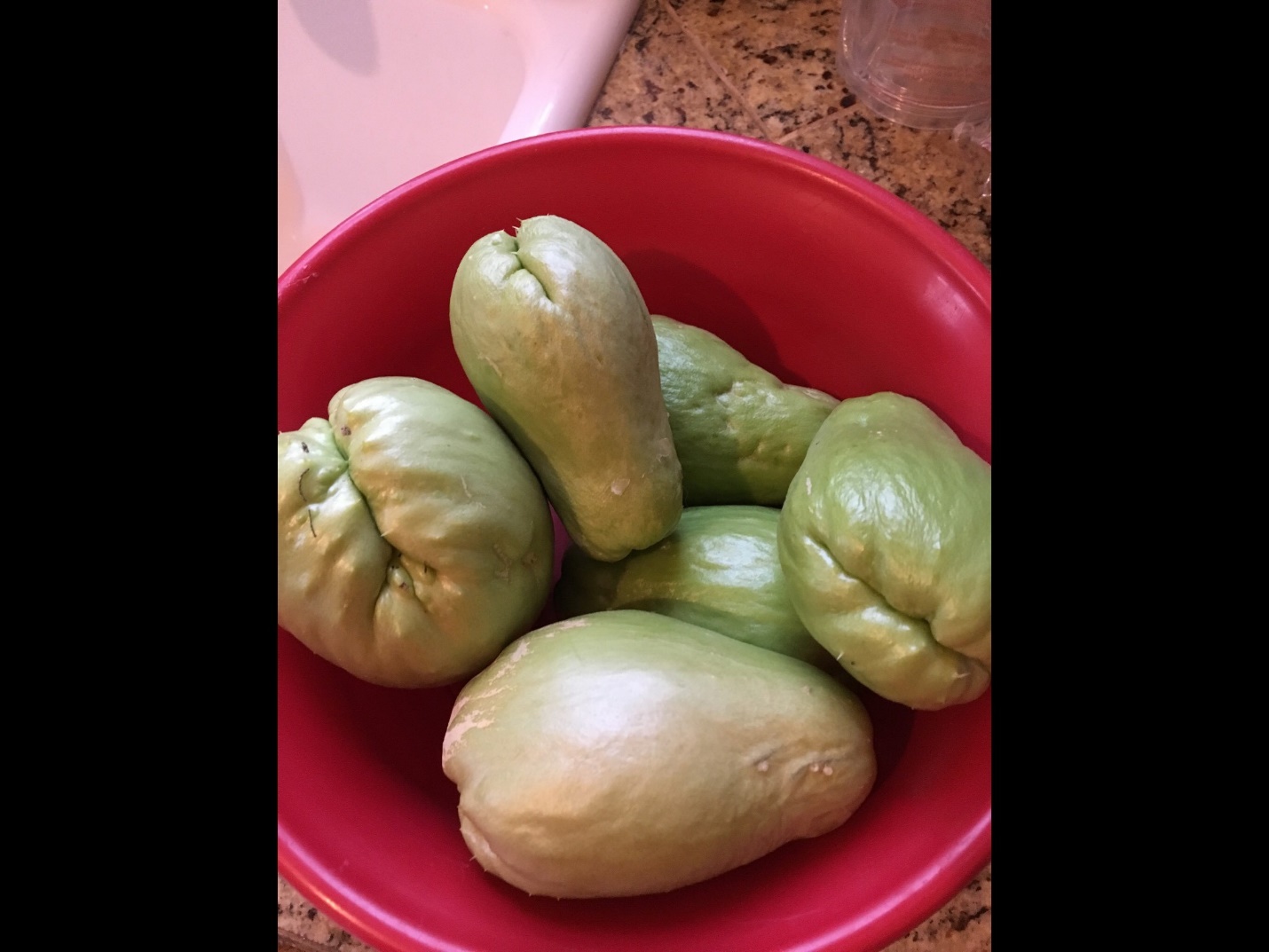
Lapeyrolerie Mirlitons
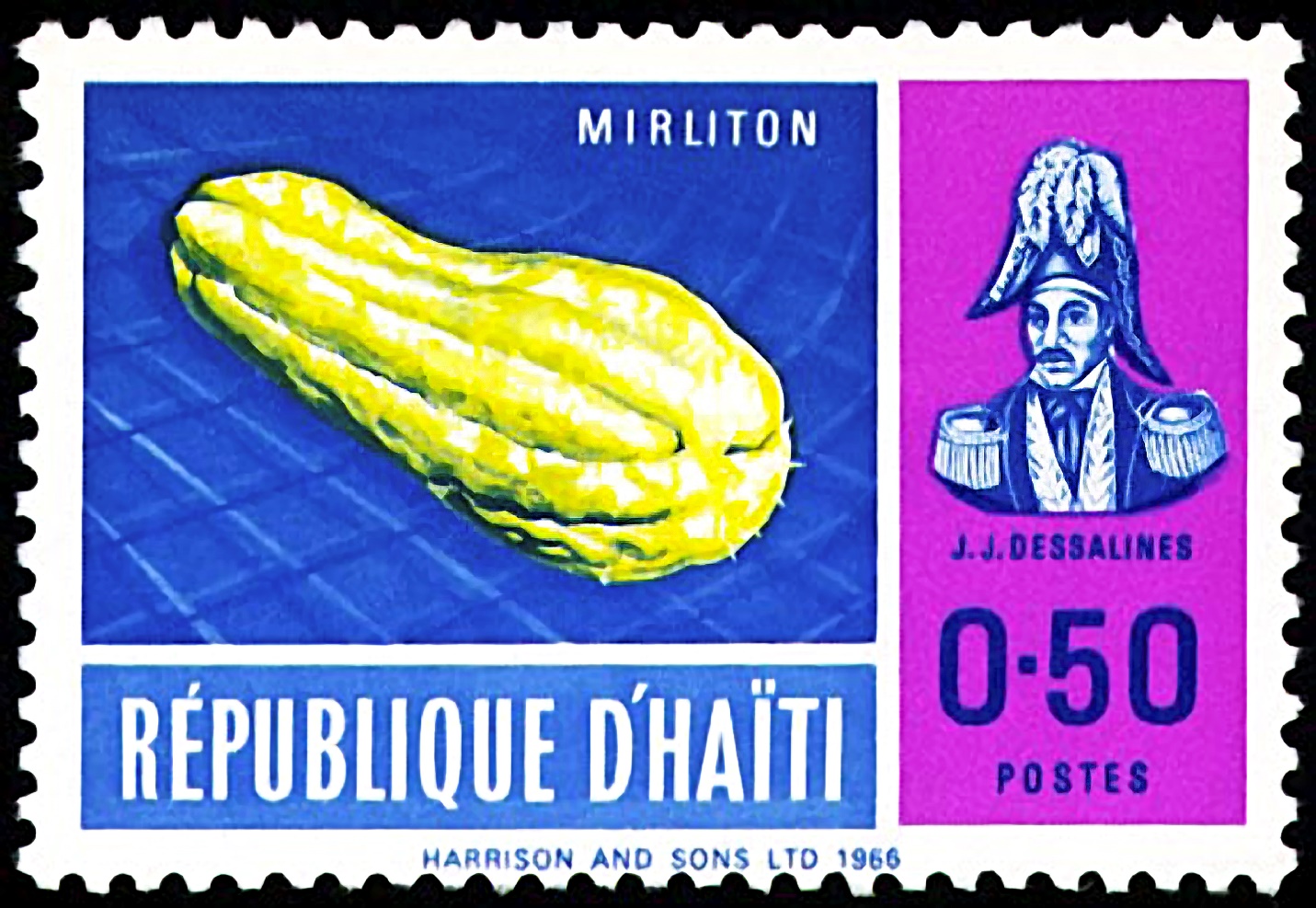
1 Haitian postage stamp, circa 1966

Renee Lapeyrolerie, proud grower in Treme neighbor of New Orleans
As a young girl in St. John Parish, Louisiana, Renee Lapeyrolerie lived in a community in which mirlitons were a common site in back yards. When she moved to New Orleans to attend Loyola University, she soon began to yearn for the lush growth of the vine. 20 years ago she bought a home in the centuries-old African American neighborhood of Treme (pronounced, Tra-May), a famous community of free people of color, many of them migrants from Haiti, and including a maternal ancestor who bought property in 1795. Haitians brought mirlitons with them from their new nation, an integral part of Haitian cuisine.
Parts of the Treme flooded during hurricane Katrina, but only a few feet. The community was part of the slim alluvial ridge along the Mississippi river and was home to mirliton gardeners for decades.
About five years ago Lapeyrolerie (pronounced Lap-a-rol-er-y) purchased a mirliton sprout from a garden center and planted it in her back yard. The vine soon spread about 20 feet along her fence and began to charge up her neighbor’s tree. Its origins as a variety are uncertain, but it is definitely part of the Louisiana landrace because it fits the phenotype (large but uniquely without furrows) and it has proven it can flourish in our climate. In the early years she had some problems with the vine flowering but not fruiting. This was not unusual for New Orleans post-Katrina because the flooding and re-roofing destroyed the habitat for bees (many hives were in attics that were disturbed by roofing). She is considering using a synthetic bee pheromone to attract bees this fall, though she can hand pollinate using instructions on our photo site.
In recent years, her five year old plant produced a good fall crop and she even got a modest spring crop in 2019. For advice on the culture of the plant, Renee had only go to her Aunt Helen and neighbors back in St. John Parish. Renee hopes to inspire fellow Treme residents to take up the mirliton and renew a tradition that is two centuries old and has donated several sprouts and plants to Mirliton.Org.
We have named the variety the “Lapeyrolerie Mirliton Variety” in honor of Renee. 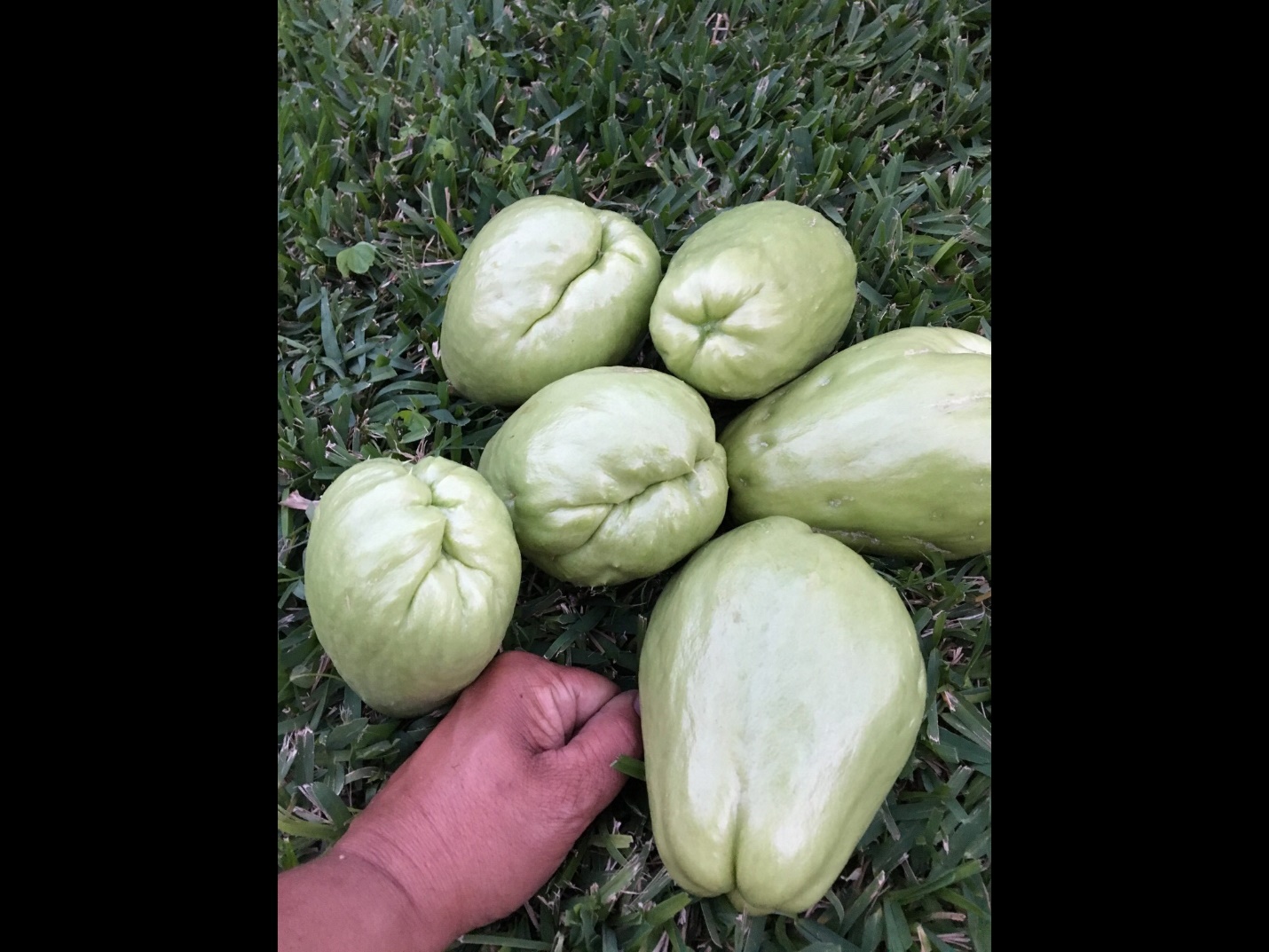 Lapeyrolerie Mirlitons
Lapeyrolerie Mirlitons
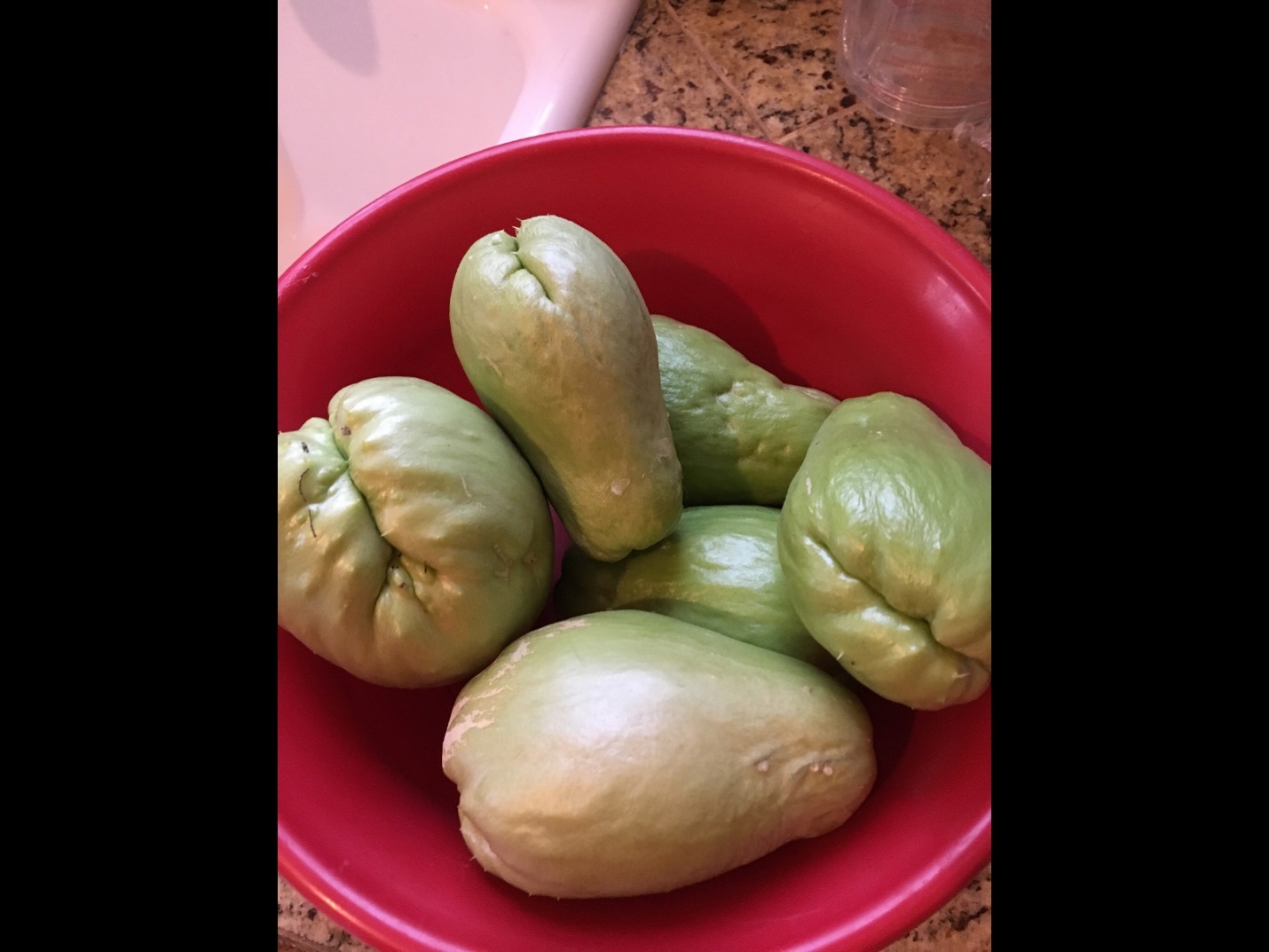
Lapeyrolerie Mirlitons
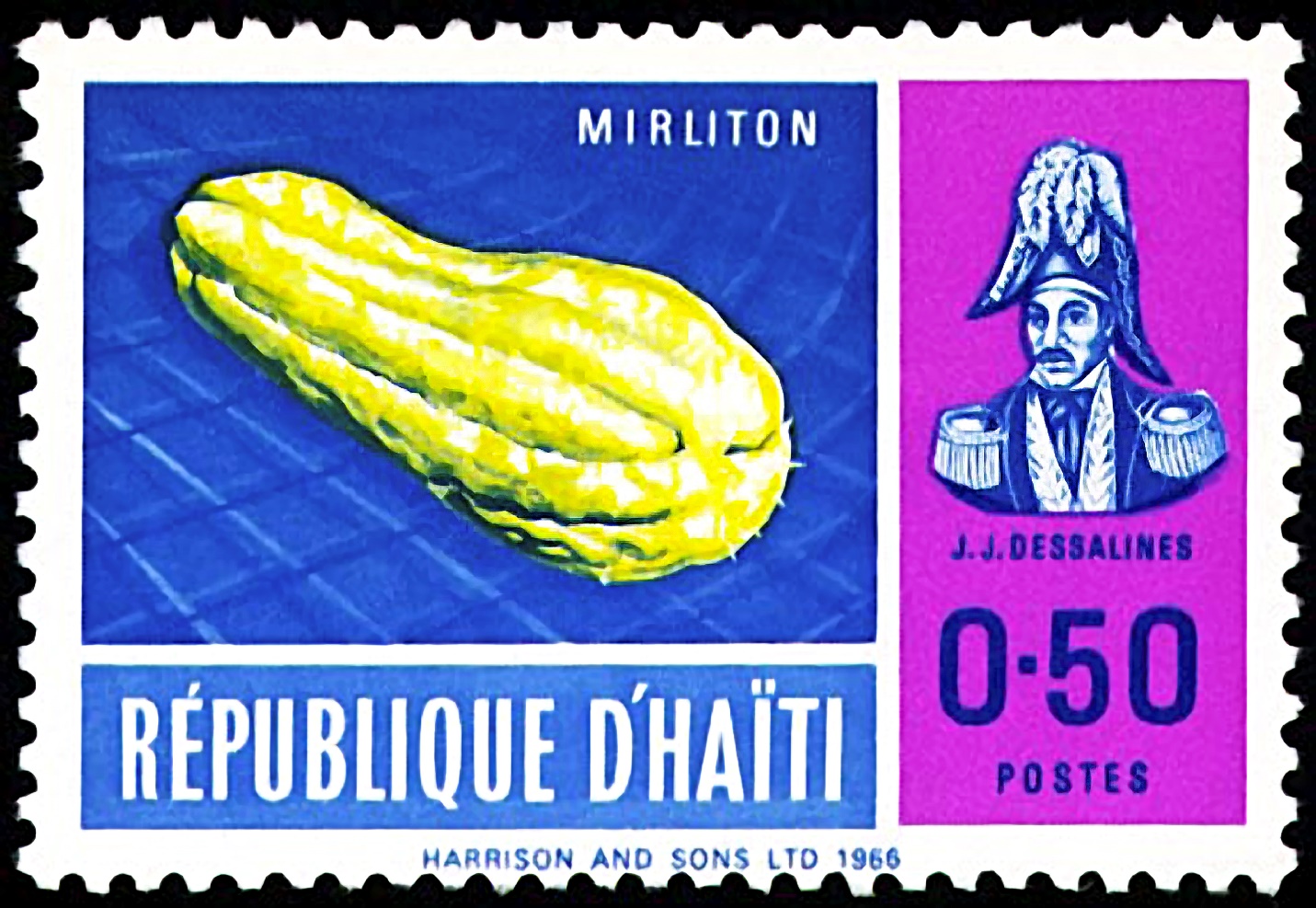
1 Haitian postage stamp, circa 1966

 Lapeyrolerie Mirlitons
Lapeyrolerie Mirlitons


 Lapeyrolerie Mirlitons
Lapeyrolerie Mirlitons

Recent Comments